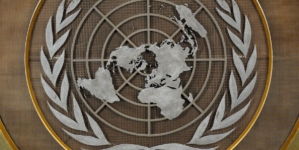-
Son to MLS! LAFC Reportedly Reaches Verbal Agreement With Tottenham Legend - 20 mins ago
-
How to Watch Chivas vs Charlotte FC: Live Stream Leagues Cup, TV Channel - 29 mins ago
-
Dave Edmunds hospitalized after major cardiac arrest, wife reveals - 37 mins ago
-
Royals vs. Blue Jays Highlights | MLB on FOX - about 1 hour ago
-
How to Watch Detroit Tigers vs Philadelphia Phillies: Live Stream Sunday Night Baseball, TV Channel - about 1 hour ago
-
At least 68 migrants dead and 74 missing after boat capsizes off Yemen coast - 2 hours ago
-
Yankees’ Jazz Chisholm Jr. Has Defiant Response to Viral Baserunning Blunder - 2 hours ago
-
Rockies hit back-to-back-to-back home runs, trimming deficit vs. Pirates - 2 hours ago
-
Tariff rates are “pretty much set,” U.S. trade representative Jamieson Greer says - 2 hours ago
-
Police investigating Oasis fan death at Wembley Stadium concert - 2 hours ago
OPEC+ Countries Agree to Boost Oil Production: What to Know
Members of the Organization of Petroleum Exporting Countries (OPEC+) on Sunday announced plans to increase oil production by over half a million barrels per day for September as concerns over supply disruptions persist.
The eight members of OPEC+ held a virtual meeting in response to U.S. pressure on some nations—such as India—to halt all Russian oil purchases in an additional move aimed at pressuring Moscow to end its ongoing conflict in Ukraine.
However, OPEC+ said it would increase output due to a healthy economy and low oil inventory, with oil prices remaining at a higher level even as output has increased from members.
Newsweek reached out to the White House and Department of Energy (DOE) by email on Sunday outside of normal business hours for comment.
Why It Matters
President Donald Trump in last year’s presidential campaign promised to tackle a number of major targets, including an end to the Russia-Ukraine war and lowering prices for Americans amid high inflation.
Russian President Vladimir Putin’s resistance to diplomatic efforts has frustrated Trump and forced the U.S. to seek more creative means to try and achieve an end to the war that began in February 2022.
What To Know
The U.S. has looked at imposing tariffs on Russia and convincing countries that still purchase Russian oil to switch to other sources. Some feared that these actions could drive up gas prices for Americans, as well.
However, those fears appear to have been averted as OPEC+ agreed to increase production, providing a healthy alternative to Russian oil. OPEC+ includes Saudi Arabia, Russia, Iraq, United Arab Emirates, Kuwait, Kazakhstan, Algeria and Oman. It remains unclear how this could impact Russia’s other sales and negotiations.
OPEC+ has made voluntary production cuts since November 2023, with plans to phase those cuts out by September 2026, but the announcement means that the countries will increase output for the second time this year—following July’s announcement of a similar increase in August—and effectively ending the program early.
Prices have remained at the higher rate of around $70 a barrel for Brent crude despite the increased output, however, raising some doubts as to what impact the increased output might have on gas prices.
Joe Klamar/AFP via Getty Images
What People Are Saying
President Donald Trump last week wrote on Truth Social, in part: “We have just concluded a Deal with the Country of Pakistan, whereby Pakistan and the United States will work together on developing their massive Oil Reserves. We are in the process of choosing the Oil Company that will lead this Partnership. Who knows, maybe they’ll be selling Oil to India some day!”
Mark Temnycky, a nonresident fellow at the Atlantic Council think tank’s Eurasia Center, previously told Newsweek: “If the U.S. follows with new restrictions or tariffs, Americans could see higher energy prices, especially at the gas pump and in sectors tied closely to fuel, like transportation and manufacturing.”
He added: “These cost increases may filter down to everyday goods as companies adjust for rising input expenses. In addition, inflation will be a concern for many American consumers and policymakers.”
What Happens Next?
The members will meet again in September for further discussions and adjustments to production.
This article includes reporting by the Associated Press.
Source link































